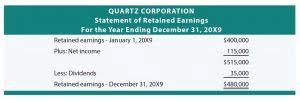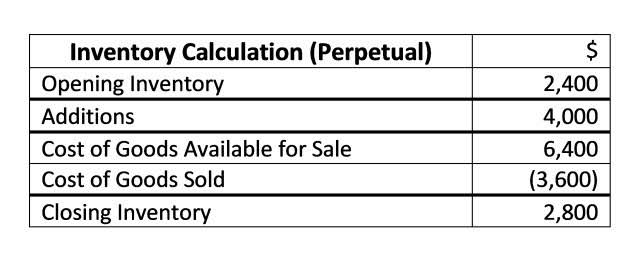Horizontal vs Vertical Analysis: What’s the Difference?

As businesses grow and their financial needs become more complex, they may need to consider more advanced accounting software. Understanding the differences between various platforms, such as in a NetSuite vs QuickBooks comparison can help in choosing the right tools to support these analytical techniques. Similar comparative statements are typically drawn out for income statement and cash flow statement as well to give a complete picture. In an absolute analysis, financial data in the form of absolute values are compared year on year.
How to Perform Horizontal Analysis
The approach is used to assist in identifying trends or patterns in a company’s business cycle. A company that wants to budget properly, control costs, increase revenues, and make long-term expenditure decisions may want to use financial statement analysis to guide future operations. As long as the company understands the limitations of the information provided, financial statement analysis is a good tool to predict growth and company financial strength.
More in ‘Business’
By comparing the common-size financial statements of different companies, analysts can quickly identify areas where a company may be over or underperforming relative to its peers. This comparative approach can reveal competitive advantages or highlight potential areas for improvement. For instance, if a company spends a higher percentage of its revenue on marketing compared to industry norms, it might suggest either a strong focus on growth or an inefficient allocation of resources. One of the primary objectives of financial statement analysis is to evaluate https://buaya188slot.com/accounting-basics-assets-liabilities-equity-2/ profitability. By examining metrics such as gross profit margin, operating margin, and net profit margin, analysts can determine how efficiently a company is generating profit relative to its revenue. This evaluation helps in identifying areas where the company excels and where there might be room for improvement.
Financial reporting
- Financial analysis is crucial for understanding a company’s financial performance and making informed decisions.
- This calculation provides a clear picture of how well the company is performing and guides strategic business insights for future decisions.
- The information needed to compute the debt-to-equity ratio for Banyan Goods in the current year can be found on the balance sheet.
- The vertical analysis considers each amount on the financial statement listed as a percentage of another amount.
- Vertical analysis requires numbers in a financial statement to be restated as percentages of a base dollar amount.
This information can be useful in making strategic decisions or identifying potential risks. In the realm horizontal and vertical analysis of managerial accounting, understanding financial statements is crucial for making informed decisions. Two fundamental techniques that aid in this understanding are horizontal and vertical analysis. These methods allow accountants and managers to interpret financial data, identify trends, and make strategic decisions.
Key Concepts of Vertical Analysis
If interest expense is $50,000 it will be presented as 5% ($50,000 divided by $1,000,000). The restated amounts result in a common-size income statement, since it can be compared to the income statement of a competitor of any size or to the industry’s percentages. Unlike vertical analysis, horizontal analysis tracks financial changes over time. It highlights dollar and percentage changes from one period to another, making it easier to detect trends.
- This analysis also gives a better picture of the performance metrics of the company and if it’s improving or on a decline.
- The insights gained during this process can significantly inform strategic planning and investment decisions.
- However, the same results may be below par when the base year is changed to the same quarter for the previous year.
- An alternate method of performing horizontal analysis calculations is to simply calculate the percentage change between two years as shown in the following example.
- As stated before, this method is best used when comparing similar companies apples to apples.

Then, for each line item you’re analyzing, you’ll want to calculate both the absolute change (the difference in value from one period to QuickBooks ProAdvisor the next) and the percentage change (the rate of change over time). For example, let’s say your company’s cost of goods sold (COGS) is 40% of total sales one year. Vertical analysis would help you quickly flag this increase, allowing you to dig deeper into potential causes like rising material costs, pricing strategies, etc. The analysis of the different items in income statement is also done following the similar procedure. Providing students with an overview of financial statements using the Dupont analysis approach. So join us as we explore the world of vertical vs horizontal analysis and equip yourself with the tools necessary for comprehensive financial evaluation.
- These analyses are used by financial analysts, auditors, and managers to assess financial health and make informed decisions.
- Vertical analysis restates each amount in the income statement as a percentage of sales.
- Another method of analysis Banyan might consider before making a decision is vertical analysis.
- Merely analyzing financial statements in isolation may not be sufficient for this purpose.
- These techniques offer unique perspectives on a company’s financial health, performance, and trends.
- Elements such as employee morale, customer satisfaction, and brand reputation are often not quantified in financial statements but play a crucial role in a company’s success.
- It is most useful to convert this information to a ratio to determine the company’s current financial health.
Horizontal and vertical analysis are powerful tools in financial statement analysis, providing valuable insights into a company’s performance and financial health. By comparing financial data over time and examining relative proportions within a single period, stakeholders can make informed decisions and identify areas for improvement. Vertical analysis, also known as common-size analysis, compares the financial data of a company within a single period.
Assume that ABC reported a net income of $15 million in the base year, and total earnings of $65 million were retained. The company reported a net income of $25 million and retained total earnings of $67 million in the current year. The financial analyst employs a broad range of methods and techniques for company analysis.

For example, a steady increase in operating expenses over several years could signal inefficiencies or rising costs that need to be addressed. Conversely, consistent revenue growth might indicate successful market expansion or product acceptance. By examining these trends, management can make more informed decisions about where to allocate resources or how to adjust strategies. Liquidity analysis is another crucial aspect, focusing on a company’s ability to meet its short-term obligations. Ratios like the current ratio and quick ratio are commonly used to assess liquidity. These ratios provide insights into whether a company has enough assets to cover its liabilities, which is particularly important for stakeholders concerned with the company’s short-term financial health.
- So join us as we explore the world of vertical vs horizontal analysis and equip yourself with the tools necessary for comprehensive financial evaluation.
- Three common liquidity measurements are working capital, current ratio, and quick ratio.
- As businesses face complex economic environments, using effective analytical tools is critical.
- This program equips you with the technical and strategic skills needed to tackle complex financial challenges.
- There are many benefits to using both horizontal and vertical analysis for your business.
- Explore the techniques of horizontal and vertical analysis in financial statements, essential for managerial decision-making and exam preparation.

Both can provide useful insights, but they serve different purposes and may be more effective when used in combination. Unlocking the power of financial data is crucial for informed decision-making. By leveraging horizontal and vertical analysis, businesses can uncover essential trends and insights that drive strategic initiatives. Discover how these analytical tools can enhance your understanding of financial performance and support your organization’s growth.

